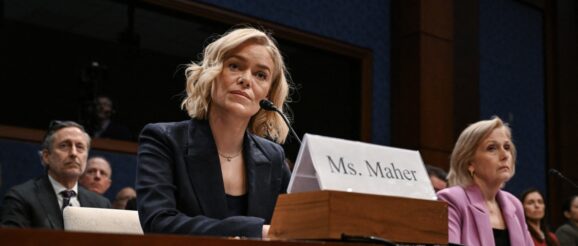Trump to halt federal funds for , PBS, other public media

The memo, which the administration plans to send to Congress when it reconvenes from recess on April 28, will open a 45-day window in which the House and Senate can either approve the rescission or allow the money to be restored.
“We serve the public interest. It’s not just in our name — it’s our mission. Across the country, locally owned public media stations represent a proud American tradition of public-private partnership for our shared common good,” it said.
PBS did not immediately respond to a request for comment.
Accusations of political bias
At the hearing, the public broadcasting heads spoke of their mission to provide free, non-partisan news and programming to all Americans.
They queried PBS CEO and President Paula Kerger about a video involving a performer in drag singing a variation on a children’s song for a young audience. (Kerger testified that the video was posted on the website of PBS’s New York City member station and never aired on television.)
Congress allocated $535 million for the CPB for the current fiscal year — an amount affirmed in a recent stop-gap bill passed by the Republican-controlled U.S. House and Senate. The CPB’s budgets are approved by Congress on a two-year cycle in large part to insulate it from political pressures; Congress has appropriated funds through Sept 30, 2027.
Where public broadcasting’s money comes from
The bulk of CPB funding goes to local stations — mostly to subsidize television, which is more expensive than radio.
Stripping away such financial support would wipe out smaller stations, the public broadcasting chiefs testified, especially in rural regions and other areas ill-served by corporate-owned media. It would also weaken the broader public media system. Alaska Public Media’s chief executive testified that the funding was vital to his state network and to ensuring his reporters’ stories found a broader audience.
Trump administration launches attacks on media outlets
Over its five and a half decades of existence, public broadcasting has mostly enjoyed bipartisan support, allowing it to survive periodic conservative pushes to strip the system of taxpayer dollars.
The networks say the agency and Congress have encouraged them repeatedly to develop a greater share of private financial support. They have worked assiduously for years with the FCC to ensure that their spots fall within FCC guidelines. Other news organizations supported by the U.S. government have also moved into the crosshairs in the early months of the Trump administration.
In New York, a judge has placed a temporary restraining order on presidential adviser Kari Lake’s attempt to shut down the federally owned Voice of America. In Washington, D.C., another judge ruled the government had to keep sending funds that Congress already had committed to Radio Free Europe/Radio Liberty.
Those lawsuits — and others — argue that Trump has far exceeded the expansive powers of the presidency, usurping Congressional prerogatives, trampling on due process and eroding free speech rights.
Even so, the White House has succeeded in previously unimaginable ways; representatives of Trump’s budget-slashing DOGE initiative, aided by Washington, D.C. police officers, forced their way into the U.S. Institute of Peace (USIP) so that the administration could take it over. The Institute, while funded by Congress, is an independent noofit like CPB.
Fired USIP employees are now suing the Trump administration. U.S. Justice Department attorney Brian Hudak has said in court that plans already are underway to lease USIP headquarters to the U.S. Labor Department. The judge overseeing the case has, to date, declined to issue a temporary restraining order to stop the transfer of assets to the government, although she said the administration has adopted a “bull in a china shop” approach.
